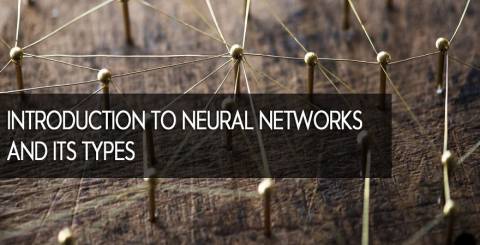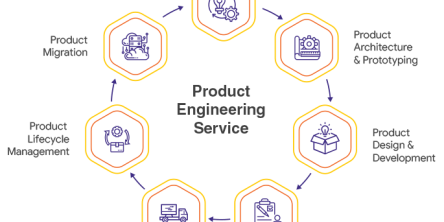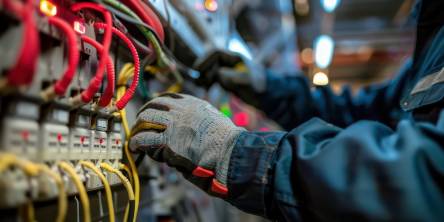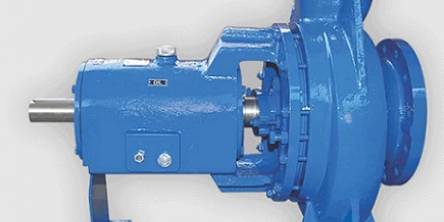Introduction to Neural Networks and their Types

The word neural is derived from the word “neuron”. An Artificial neuron is the basic functional unit of the nervous system which is similar to biological neuron. A Neural Network or Artificial Neural Network is a biologically inspired neural network made by an interconnection of neurons. Connections of neurons lead to transmit signal from one neuron to another. Neuron or their connections have some weight. There are different layers of a network interconnected by nodes. These Neural Networks are made to learn for performing classification, decision making, and other actions.
What is a Neural Network?
The first layer of the network is called input layer to which input is applied and the last layer is output layer which generates the output. Between input layer and output layer, there are hidden layers present. Nodes of the input layer are passive from which multiple outputs are generated and passed to next layer (hidden layer). Further, nodes of a hidden layer or output layers are active. In neurons, there is activation function which decides how powerful an output of neuron should be. Weights are the number of pulses sent by a neuron.
Main types of Neural Networks are as follow:
- Feedforward Network (FFN): It is a classification algorithm basically used for supervised learning problems. It consists of different layers of processing units where each unit in the proceeding layer is connected with all units of the previous layer. Each connection has its own weight. Data is transferred from input layer to output layer by passing through hidden layers. In this feedforward network, there is no feedback or circulation between input and output unit, it operates in two phases learning phase and classification phase.
- Radial Basis Network: This network uses Radial Basis Function as an activation function in the hidden layer. A Radial Basis Function is a real-valued function defined as a distance of input from the origin. It is similar to feed forward Neural Network. Radial basis function's inputs and neuron parameters are combined linearly to get the output.
- Convolutional Neural Network (CNN): CNN consists of one or more convolutional layer which is mainly used for classification and image recognition. It is a typically connected MLP in which network learns from the filters sliding over an image which is called convolutional operation. It consists of pooling and fully connected layers. Filter bank or weights in convolutional layers are used because they decrease memory space and performance improvement. Performance becomes poor when input images are rotated i.e after different variations of objects in the image and rotation of an object, it is not able to predict accurate results.
- Capsule Network: Due to above limitations of Convolutional Networks CapsNet evolved. This network is trained with different rotations of the same image to produce an accurate outcome. Basically, this network is a nested set of neural layers in which more layers can be added inside a single layer. For each entity of an image, it represents a vector. An output is represented in form of a vector and oriented vector shows properties of an entity. This vector is sent to all parents of network and thus a prediction vector is found after multiplying its weight with the weight matrix.
- Multilayer Perceptron (MLP): It is a feed-forward network having three layers of nodes i.e input layer, an output layer, and hidden layer. Nodes can be trained using a back-propagation technique. In hidden layer and output layer non-linear activation function is applied. All layers are fully connected in which each node consists of some weight. This network solves the problem in stochastically manner, hence used for solving complex problems. Even though it faces a lot of competition from support vector machine but the popularity of deep learning and back-propagation makes it effective.
- Recurrent Neural Network (RNN): These types of networks are used for sequential information. The sequence of input is given on the basis of which next output is produced. Both current, as well as previous inputs, are needed to predict the output. These networks are used for generating text, machine translation, chatbot and speech recognition etc.
Here is some brief description of different types of networks. Many organizations are providing online video training on this topic due to its increasing demand. Finally, the conclusion is that for different tasks and applications different types of Neural Networks are used.
Similar Articles
Vertical centrifugal pump stands for a sophisticated approach to alleviating air contamination and maintaining air quality. The effectiveness of these processes is closely connected to the accessibility of reputable and durable pumping solutions.
A rabbit can outrun a cunning and adaptable fox through its agility, awareness, and quick instincts to survive! The same applies to businesses aiming to outperform their competitors.
Discover the must-have precision tools for electrical jobs—safety, accuracy & efficiency. From multimeters to insulated gear, equip like a pro!
The world of technology is growing fast now, and data has emerged as one of its richest resources. Data-based decisions create better products and experiences for customers and improved ways of doing business for many companies.
Vertical centrifugal pumps are essential in different industrial and commercial applications because of their small layout, effectiveness, and capacity to deal with a large range of liquids. These pumps are specifically valued for their space-saving vertical setup that makes them excellent for installations with restricted floor area.
Engineering design continues to innovate and redefine possibilities in the dynamic world. From pioneering sustainable solutions to enhancing efficiency across industries, modern engineering design plays a pivotal role in shaping our future
The majority of industrial procedures include the conduction of fluids or energy transfer. This is possible thanks to the centrifugal pumps which are the most popular turbo equipment. The growth and renovation of the industrial processes have actually been always connected to the improvements in the pumping tools.
Discover the top 5 bearings to boost your machinery's performance in 2024. Expert picks for durability, efficiency, and cost-effectiveness.
In the bustling landscape of Australia's construction industry, structural engineers stand as the architects of stability, ensuring that every edifice rises tall and resilient against the test of time. With a projected growth rate of 15.2% over the next five years, the career prospects for structural engineers in Australia are not just promising but indicative of a burgeoning industry ripe with opportunities.









